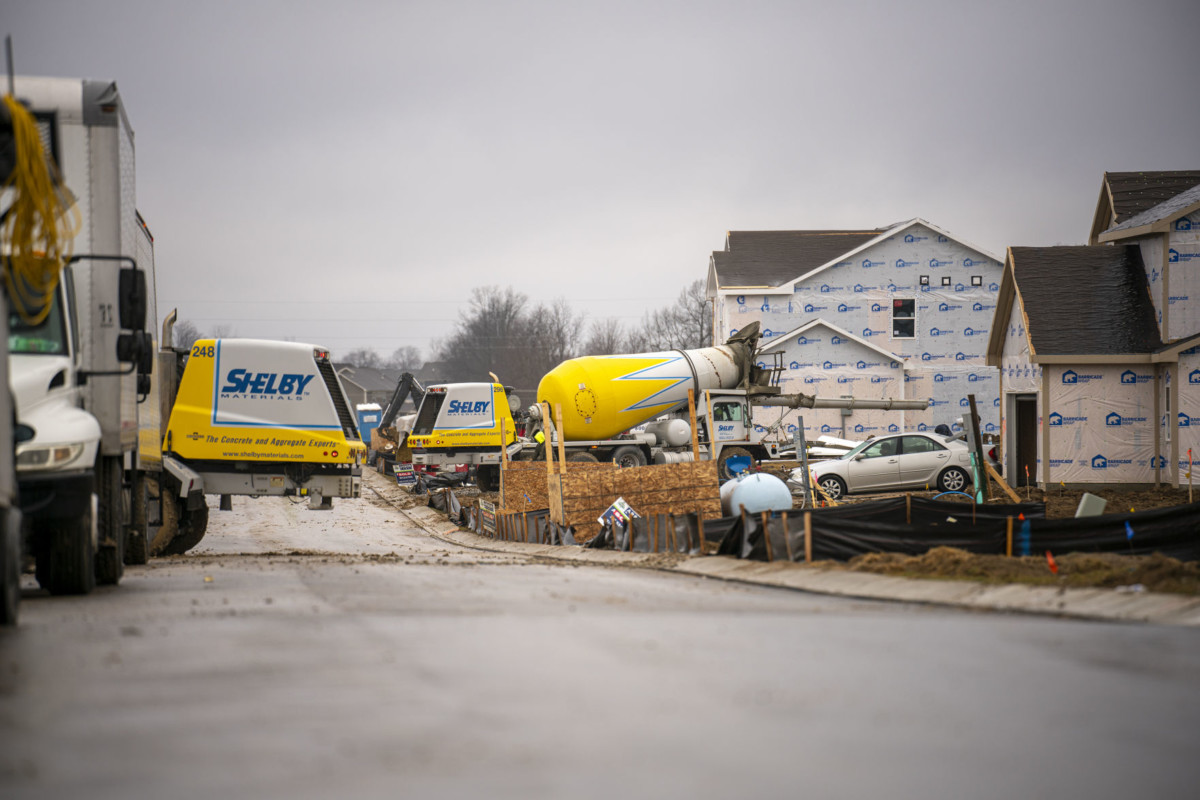The housing market defied the pandemic recession in 2020, and that trend is expected to continue this year.
The only problem is, there aren’t enough houses to sell.
Steve Burkhardt, a realtor with F.C. Tucker Company, has lived and worked in the Johnson County area for nearly 50 years, and he’s never seen a more difficult market for home buyers than in the past two years.
"It’s a tough buyers’ market," Burkhardt said. "There’s just not enough inventory. People that own homes have decided not to move."
It’s no secret the market is hot right now, he said. This is due in part to mortgage rates remaining low around 3% in the last year, and that is not expected to change this year, Burkhardt said.
<strong>Builders struggle to get in front of demand</strong>
Houses remain on the market for an average of 36 days now, according to MIBOR Realtor Association, the professional organization representing Central Indiana Realtors. By comparison, in 2015, houses for sale remained listed for an average of 95 days.
In Johnson County, 121 homes are listed for sale and 289 are pending as of Jan. 26, according to MIBOR. Full year home sales in the county increased by 4.2% in 2020.
The supply and demand problem is mainly attributed to less people wanting to sell their houses, and developers are unable to get a stock of houses built ahead of time, said Ben Watkins, chief marketing officer for Arbor Homes.
"With resale inventory being so low, it’s driven a lot of people to new home construction, which is something they may not have considered before," Watkins said.
Builders are struggling today to keep enough lots developed in front of them.
"It goes back to the hangover in 2008 when some developers went out of business, and now they’re building more houses today than they did last year," Burkhardt said.
This boom in demand for new houses has been pent-up for years, and the coronavirus pandemic exasperated it, said Steve Lains, CEO of the Builders Association of Greater Indianapolis.
People are spending much more time in their houses now, and are realizing that the floor plan they liked years ago does not work anymore, he said.
"People found that not having a home office and working at the kitchen table was sufficient then, but now the kids are going to school at home and the parents are working at home, they needed more space," Lains said.
Central Indiana builders have had the busiest year yet, despite the pandemic, Lains said. In Johnson County, 955 single-family home building permits were filed last year, compared to the 753 filed in 2019.
Another busy year is expected, but that’s still not enough to meet the growing housing needs, Lains said.
There are currently just more than 10,300 housing lots available to buy in central Indiana, which includes nine counties surrounding Indianapolis. More than 8,000 lots were developed in 2020, Lains said.
"We only have 10,332 lots in a market that is absorbing around 8,669 lots a year. We just have right at a one-year supply, when a two- to three-year’s supply is preferred," he said.
At this rate, more than 28,000 lots would need to be developed by 2025 for new homes in central Indiana to keep up with demand, Lains said.
"Is it possible? Sure. Will it be a challenge? Most definitely," he said.
<strong>High price tags for new houses</strong>
The increasing struggle to get lots developed and new homes built came from a "perfect storm" of challenges, Lains said.
Affordability is decreasing as demand for houses rises, and builders are in a position where they have to build homes with a higher price tag now, he said.
The average price of a new home in Johnson County is around $347,000, which is well above what residents can afford with the county’s average income of $65,000, Lains said.
"That doesn’t jive," he said.
Lumber prices skyrocketed by 30% in 2020, when normally prices increase by 3% to 5% each year, Watkins said.
"That really put a hurt on builders," Watkins said.
On top of the lumber costs, local zoning standards continue to drive down affordability, Watkins said.
Most local standards in Johnson County require houses and lots to be a certain size, regulate the density of neighborhoods and demand what types of material needs to be used on the outside. And recently, local officials, particularly in Greenwood, have been banning the use of vinyl siding, which drives up the cost to build a house as well.
Lains said 24% of the cost of new home is attributable to local regulations, based on studies from the builders association. And in Johnson County, architectural guidelines can add $28,000 to the cost of a home, he said.
"Zoning ordinances impede production and impede supply," Lains said.
There’s also a labor shortage and supply chains backed up for materials, increasing costs further.
<strong>A market ready for change</strong>
Within the next year, the housing market is not expected to change from where it is now, even with the pandemic, Burkhardt said.
"As long we get enough inventory, we’ll sell as many houses this year as we did last year," he said.
But in the near future, Lains sees the market having to change in favor of smaller houses and high-density lots.
"That increased cost of housing is oftentimes created by the burden of old zoning that creates large lots and larger houses different than the changing market might want," Lains said.
Burkhardt also hopes to see bigger varieties of housing options. The announcement of Franklin’s $11 million mixed-use development project that could bring high-end condos and townhomes to downtown is a start, he said.
"That may be one thing that may change in the future for Greenwood and Franklin, and maybe even Whiteland as it grows, that there will be some more walkable-type communities that we really haven’t seen in Johnson County," Burkhardt said.





